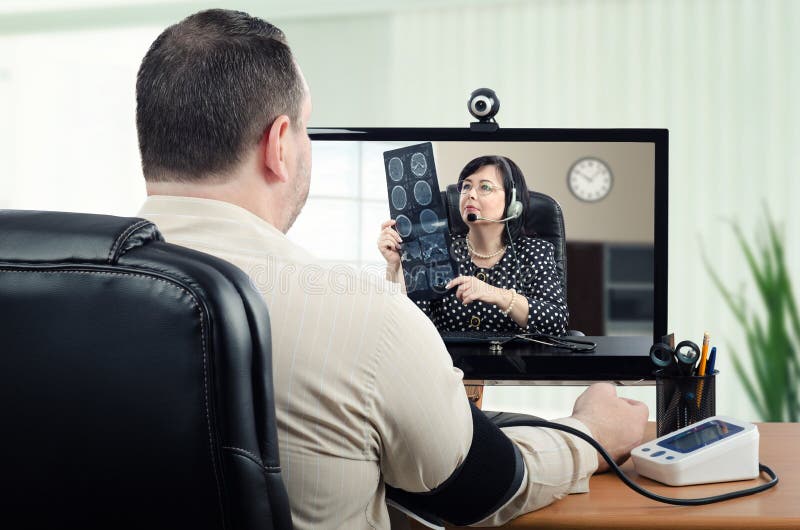Teledoctors: Bridging the Void Between Clients and Medical Care Service Providers
The development of teledoctors represents a considerable change in the health care landscape, supplying remedies to long-lasting accessibility problems dealt with by patients and service providers alike. By integrating telemedicine into traditional techniques, health care systems can get to remote and underserved populations, providing crucial clinical assessments without the obstacles of distance and traveling. This paradigm change not only enhances individual interaction however additionally enhances resource allowance for providers. Nevertheless, the widespread fostering of teledoctors elevates vital concerns about the sustainability of such practices and the ramifications for future healthcare shipment. What obstacles lie ahead in guaranteeing this model's performance and equity?
Surge of Telemedicine

The surge of telemedicine is additionally fueled by the demand for cost-efficient healthcare. Medical care systems worldwide are under stress to lower expenditures while keeping high quality care, and telemedicine offers a viable option. By minimizing the requirement for physical sees, telemedicine decreases above prices for health care centers and eventually lowers the economic concern on clients.
In Addition, the COVID-19 pandemic functioned as a catalyst, speeding up the adoption of telemedicine techniques. Social distancing procedures and the demand to reduce direct exposure threat demanded a change towards remote appointments, triggering regulative bodies to adapt and sustain telehealth solutions. This change has not only tried and tested telemedicine's efficiency yet likewise its possible to evolve as a staple element of contemporary health care systems.
Advantages for Clients
Mainly, telemedicine improves accessibility, enabling clients in underserved or remote locations to consult medical care companies without the requirement for considerable traveling. Telemedicine also uses clients the benefit of getting medical guidance and treatment from the comfort of their homes, minimizing the time and cost linked with taking a trip to a health care center.
Moreover, telemedicine supports continuity of care by facilitating routine follow-ups and tracking, which are important for managing chronic conditions. Individuals can quickly arrange consultations and gain access to medical care solutions outside conventional workplace hours, fitting their active way of lives. This flexibility results in improved person engagement and adherence to treatment plans, possibly resulting in better health and wellness outcomes.
Additionally, telemedicine can assist reduce the risk of infection transmission, an issue heightened by the COVID-19 pandemic. By minimizing the requirement for in-person visits, clients can prevent crowded waiting spaces and decrease exposure to infectious health problems. Ultimately, telemedicine encourages clients by providing timely, reliable, and personalized health care solutions.
Benefits for Providers
For medical care service providers, telemedicine uses considerable advantages that improve the efficiency and reach of their technique. By leveraging digital innovation, suppliers can expand their services to a broader group, consisting of those in remote or underserved areas. This not only eases geographical barriers however also enhances client retention and procurement by making healthcare extra easily accessible.
With telemedicine, the requirement for physical area reduces, enabling providers to conserve on actual estate and operational costs. This flexibility can lead to raised client examinations per day, thus boosting profits possibility.
Telemedicine also cultivates a more joint environment for doctor. teledoctors. It allows smooth sharing of individual info among specialists, enhancing analysis precision and treatment outcomes. In addition, digital More Bonuses platforms can integrate with electronic health documents (EHRs), improving data precision and streamlining administrative jobs
Additionally, telemedicine enhances client fulfillment, which is critical for company credibility and success. By offering practical and prompt treatment, carriers can boost patient commitment and interaction, additionally enhancing the provider-patient relationship.
Conquering Difficulties
While telemedicine supplies various benefits for doctor, it additionally provides obstacles that require mindful consideration. One considerable difficulty is ensuring data privacy and safety. As individual details is transmitted electronically, the danger of information violations increases, requiring durable cybersecurity procedures. Health care service providers should stick to strict regulations like HIPAA to safeguard sensitive info, therefore requiring investment in safe platforms and continuous personnel training.
Another difficulty is the digital divide, which can hinder access to telemedicine solutions. Not all individuals have equivalent accessibility to the required modern technology or net connection, particularly those in underserved or rural areas. This difference can intensify existing health care inequalities, making it important for providers to discover alternative solutions, such as partnerships with neighborhood companies, to link this void.
Furthermore, there are constraints in carrying out physical exams remotely. Certain conditions call for in-person analysis, highlighting the requirement for a hybrid version that incorporates telemedicine with conventional visits. When telemedicine is appropriate and making certain seamless transitions between virtual and in-person treatment., service providers need to navigate these obstacles by establishing methods to identify.
Future of Medical Care
The future of healthcare is poised for a transformative evolution, driven by the quick combination of technology and advancement. Central to this shift is the rise of telemedicine, which is redefining exactly how clinical services are accessed and supplied. With advancements in digital communication, telehealth platforms are ending up being more sophisticated, providing real-time examinations, remote person surveillance, and customized care strategies. This not just boosts patient comfort however likewise increases access to medical care, particularly in underserved and rural locations.
Fabricated knowledge (AI) and artificial intelligence are likewise set to play crucial functions. These innovations can examine large quantities of Going Here information, providing anticipating insights into person health and wellness, boosting diagnostic accuracy, and individualizing therapy strategies. AI-driven devices can enhance doctor' capacities, causing more educated decision-making and far better patient results.
Additionally, wearable technology and Internet of Clinical Things (IoMT) devices are revolutionizing patient interaction and aggressive health and wellness management. These devices enable continual wellness monitoring, enabling for early detection of timely interventions and prospective concerns.
As these innovations remain to development, they assure to create a much more reliable, easily accessible, and patient-centric health care system, eventually linking the space in between patients and medical care suppliers. - teledoctors
Conclusion
Health care companies benefit from extra reliable time monitoring and boosted partnership possibilities. Despite obstacles such as technical obstacles and regulative issues, the future of health care appears significantly comprehensive and reliable due to the combination of telemedicine into conventional care designs.

As telemedicine proceeds to reshape health care delivery, clients stand to acquire substantially from this transformation. Primarily, telemedicine boosts accessibility, permitting patients in remote or underserved locations our website to seek advice from healthcare suppliers without the need for substantial traveling. Telemedicine also offers patients the ease of obtaining clinical guidance and therapy from the convenience of their homes, lowering the time and price linked with taking a trip to a healthcare facility.
Eventually, telemedicine equips individuals by providing timely, effective, and customized healthcare services.